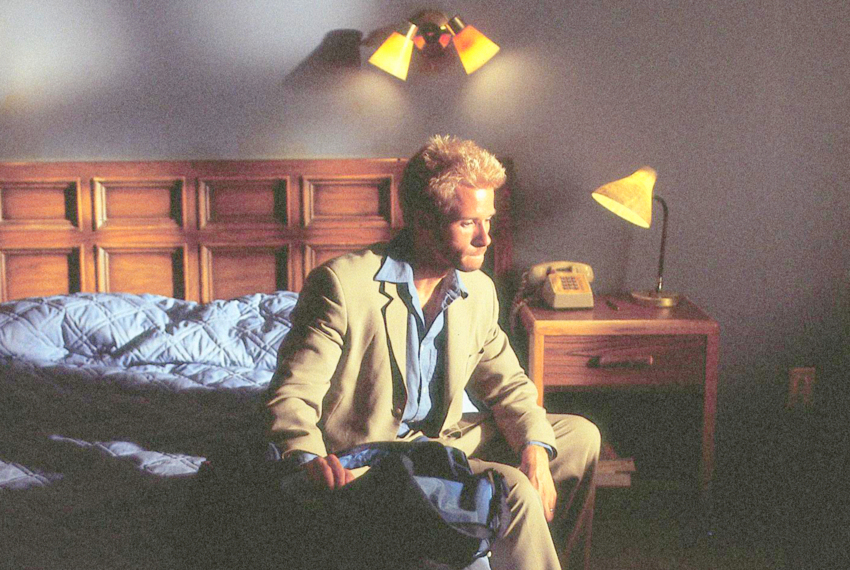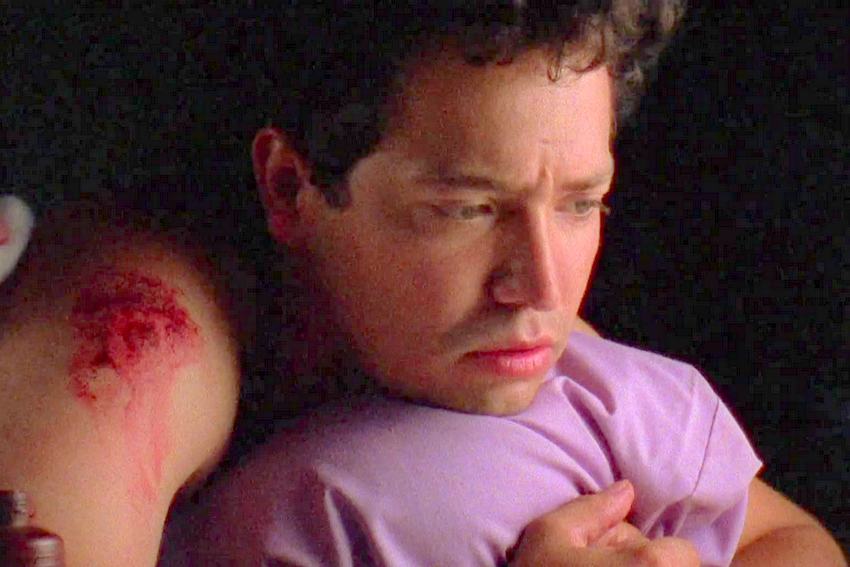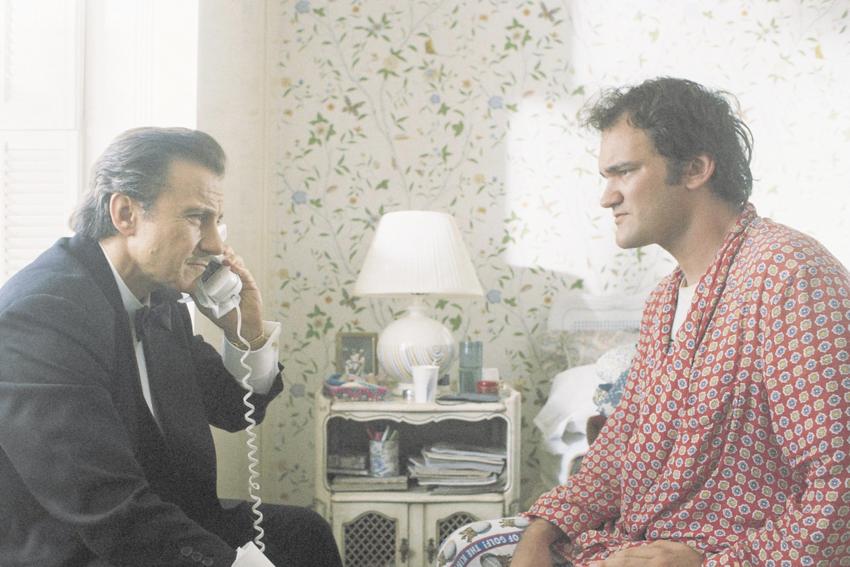By Oladapo Bamidele — November 4th 2023

Independent filmmaking is really known as indie filmmaking or in other words making a film independently. It includes the making of a feature film, or a short film or web series that is produced outside a film studio system.
These films are typically known by their unique content, style, and the realization of the filmmaker’s artistic vision. Very often they are made with much smaller budgets. Independent productions may feature well-known actors, who have taken substantial pay cuts for various reasons. One such is the belief in the film’s message, or the chance to work with a particular director they admire. Marketing for indie films vary from limited releases at independent theaters to major campaigns, and to wide releases. They may are also often showcased at film festivals to find distribution for wide releases.
But ‘Memento’ was so successful, such a huge cult hit, almost on the scale of a large film. If that had happened, with all the acclaim, before the next job, I’d have found it very difficult to figure out what to do next.
Christopher Nolan
Defining Indie Filmmaking
When discussing the realm of filmmaking, the term “indie film” frequently arises, prompting curiosity and questions. To clarify, indie filmmaking refers to the creation of a movie without financial support from a major film studio or production company. This places the responsibility of securing funding on the shoulders of the main figures involved, be it through crowdfunding, private investors, or alternative sources of financial backing. Consequently, indie films are often characterized by their low budgets, distinguishing them from studio-backed productions.
Characteristics of Indie Films
Independent films are not a new phenomenon, having been an integral part of the film industry for over a century. However, in recent times, the distinction between indie and studio-backed films has grown more pronounced, particularly with the substantial financial disparities between the two. While studio-approved films may command budgets in the millions, or even billions for major franchises, independent filmmakers must navigate the challenging task of raising funds independently, highlighting their resourcefulness and determination.

The Birth of Indie Cinema
Before major studios dominated the film industry, an alternative movement emerged known as independent cinema or “indie filmmaking.” This rebellion against the traditional studio system allowed filmmakers to create stories outside the confines of commercial expectations, resulting in a diverse landscape of cinematic expression.
Pioneers of Independent Filmmaking
Early pioneers such as John Cassavetes, known for his raw and intimate portrayal of human emotions in films like “Faces,” and Jim Jarmusch, whose minimalist and unconventional storytelling captivated audiences in “Stranger Than Paradise,” paved the way for independent filmmakers. Their determination to challenge mainstream norms inspired a generation of auteurs to break free from the shackles of conformity and explore uncharted creative territories
Milestones in Indie Film History
The 1980s witnessed a surge in indie filmmaking with landmark releases like “Sex, Lies, and Videotape” by Steven Soderbergh, which not only garnered critical acclaim but also sparked a renewed interest in independent cinema. Subsequent decades saw the rise of groundbreaking indie productions such as “Clerks” by Kevin Smith, a low-budget triumph that solidified the potential of independent films to resonate with audiences on a global scale..

As indie filmmakers continued to defy conventions, the Sundance Film Festival emerged as a pivotal platform for showcasing their work, providing invaluable exposure and opportunities to connect with distributors and industry professionals. This evolution of independent cinema not only revolutionized storytelling but also redefined the very essence of filmmaking, emphasizing creativity and authenticity above commercial interests.
Characteristics of Indie Films
An independent film, or “indie film,” is known for its distinct characteristics. These set it apart from a big-budget movie. Indie films are driven by the spirit of creativity, resourcefulness, and unconventional storytelling. Therefore, to understand these defining features, can offer very valuable insights into this unique filmmaking landscape.
Storytelling and Creativity
Indie filmmakers are celebrated for their boundless creativity and innovative storytelling. These filmmakers are freed from the constraints of big studio expectations. Indie films often explore daring narratives, and unconventional themes. This creative freedom allows filmmakers to delve into uncharted territories, bringing fresh perspectives to the screen, such a fractured narrative as Memento. Their emphasis on authentic storytelling fosters a profound connection between the film, the filmmaker and its audience. Thus creating an immersive and thought-provoking viewing experience.

Budget Constraints and Funding
A defining feature of indie filmmaking is the resourceful approach to budgeting and funding. Unlike big-budget blockbusters, indie films often operate with very limited financial resources, compelling filmmakers to maximize creativity within constrained budgets. This constraint fuels a culture of innovation, where filmmakers find inventive ways to bring their vision to life without the luxury of substantial funding. It also necessitates a focus on compelling storytelling and authentic performances to drive the narrative, showcasing the ability to achieve cinematic brilliance within modest financial means. El Mariachi was shot with $7k, and was distributed but Columbia Pictures, Sony Pictures

Distribution and Exhibition
Indie films face unique challenges in distribution, and exhibition. Unlike mainstream movies with wide theatrical releases. Indie films rely on film festivals, independent theaters, and online platforms to reach their audience. This alternative distribution model allows for greater diversity in content and amplifies the visibility of indie filmmakers. Memento gained substantial word-of-mouth press from the film festival circuit. With this publicity, Memento found foreign distributors, opening in more than 20 countries worldwide. Newmarket, in a financially risky move, distributed the film itself in 500 theatres. The film’s success surprised those who has passed on the film, so much so that Weinstein Co. realized their mistake and tried to buy the film from Newmarket.

The Indie Filmmaker’s Toolbox
As an indie filmmaker, your toolbox is more than just physical equipment. It includes the essential equipment for low-budget filmmaking, leveraging digital technology and accessibility, and building networks and collaborations.
Essential Equipment for Low-Budget Filmmaking
When you’re working with a limited budget, knowing which essential equipment to invest in can make all the difference. While a high-end camera and professional lighting can be out of reach, there are alternative options. Consider the use of DSLR cameras, smartphone stabilizers, portable LED lights, and external microphones. These tools allow indie filmmakers to produce high-quality visuals and audio without breaking the bank.

Digital Technology and Accessibility
Digital technology has revolutionized filmmaking, making it more accessible than ever before. With the rise of affordable editing software, and online distribution platforms, indie filmmakers can bring their vision to life without the need for extensive resources. The democratization of filmmaking tools has empowered creators to produce and distribute their work to a global audience.
Networking and Collaborations
Networking and collaborations are vital for indie filmmakers. Building relationships with other creatives, such as writers, cinematographers, and actors, can open doors to new opportunities and resources. Platforms like film festivals, industry events, and online forums provide avenues for connecting with like-minded professionals and potential collaborators. Leveraging these connections can lead to shared resources, expertise, and support in the competitive world of indie filmmaking.

Challenges Faced by Indie Filmmakers
Navigating the world of independent filmmaking presents a myriad of challenges that often test the fortitude and creativity of filmmakers. From financial hurdles to gaining recognition and building an audience, the path to success is laden with obstacles that require relentless determination and ingenuity.
Financial Hurdles
Independent filmmakers often face significant financial challenges when bringing their vision to life. Limited funds may restrict access to high-quality equipment, professional talent, and marketing resources, compelling them to seek innovative solutions to produce compelling content within stringent budgets. Consequently, creativity becomes central in overcoming financial barriers, encouraging resourcefulness and unconventional approaches to storytelling that captivate audiences despite financial constraints.
Competition in the Film Industry
Achieving recognition as an indie filmmaker involves navigating a complex web of industry gatekeepers, festival circuits, and distribution channels. Securing visibility and acclaim for their work often requires filmmakers to leverage networking opportunities, participate in film festivals, and forge strategic partnerships to elevate their projects onto larger platforms. This quest for recognition fosters resilience and adaptability, compelling indie filmmakers to cultivate a strong professional network and develop persuasive pitches that captivate industry stakeholders, and audiences alike.

Gaining Recognition
The film industry is fiercely competitive, with indie filmmakers vying for recognition and acclaim amidst a sea of talent. Standing out in this crowded landscape demands originality, unique storytelling, and an unwavering commitment to artistic vision. As a result, indie filmmakers must continuously hone their craft, carving out a distinct niche that resonates with audiences and distinguishes their work from mainstream productions. Embracing the inherent competitiveness of the industry can inspire indie filmmakers to push creative boundaries and deliver truly remarkable content.
Building an Audience
Building a loyal and engaged audience is a crucial goal for indie filmmakers seeking to amplify the reach and impact of their work. Engaging with potential viewers, fostering community support, and harnessing the power of digital platforms are essential strategies for cultivating a dedicated fan base. Through authentic storytelling and meaningful connections, indie filmmakers can cultivate a devoted audience that champions their projects, propelling them towards greater visibility and success.
Success Stories in Indie Filmmaking
The world of indie filmmaking is replete with inspiring success stories that exemplify the triumph of creativity and dedication in the face of formidable odds. These success stories not only showcase breakthrough movies and directors but also underscore the significance of film festivals, recognition, and the transition to mainstream success.

Breakthrough Movies and Directors
Indie filmmaking has been the launchpad for numerous breakthrough movies and directors, such as Richard Linklater’s “Slacker,” Quentin Tarantino’s “Reservoir Dogs,” and Christopher Nolan’s “Following.” These films not only captivated audiences but also demonstrated the potential of indie filmmaking to deliver unique storytelling and thought-provoking narratives. The journey from independent projects to widespread acclaim has sparked inspiration and set new standards in the film industry.
Film Festivals and Awards
Film festivals play a pivotal role in providing a platform for indie filmmakers to showcase their work and gain recognition. Events such as Sundance Film Festival, Cannes Film Festival, and Toronto International Film Festival have been instrumental in propelling indie films into the spotlight. Furthermore, accolades and awards garnered at these festivals validate the talent and originality of indie filmmakers, fostering a culture of appreciation for independent cinema.
Transitioning to Mainstream Success
The transition from indie filmmaking to mainstream success has been witnessed in the remarkable journeys of directors like Ava DuVernay and Greta Gerwig. Their foray into mainstream cinema following their indie breakthroughs exemplifies the potential of indie filmmakers to make a lasting impact on the industry. This transition not only broadens the reach of their storytelling but also serves as a testament to the strength of indie roots in shaping influential careers.

The Impact of Indie Filmmakers on the Film Industry
Influencing Mainstream Cinema
Indie filmmakers have significantly influenced mainstream cinema by introducing fresh storytelling perspectives and innovative filmmaking techniques. Their willingness to take creative risks has pushed the boundaries of traditional filmmaking, inspiring mainstream filmmakers to explore unconventional narratives and experiment with non-traditional approaches to storytelling. The indie film movement has demonstrated that originality and authentic storytelling can resonate with audiences on a profound level, prompting mainstream cinema to embrace diversity and creativity in storytelling.

Cultivating Diverse Voices and Stories
Indie filmmakers have played a pivotal role in cultivating diverse voices and stories within the film industry. They have championed narratives from underrepresented communities, shedding light on experiences and perspectives that were previously marginalized in mainstream cinema. By embracing diversity in storytelling, indie filmmakers have broadened the scope of cinematic representation, enriching the industry with authentic and multifaceted narratives that resonate with audiences worldwide. Their commitment to inclusivity has paved the way for a more diverse and representative film landscape.
The Future of Indie Filmmaking
The future of indie filmmaking holds tremendous potential for shaping the trajectory of the film industry. As technology continues to democratize the filmmaking process, aspiring indie filmmakers are empowered to bring their stories to life with unprecedented creative freedom. The digital age has ushered in new avenues for distribution and audience engagement, offering indie filmmakers opportunities to connect with global viewers and explore innovative distribution models. Additionally, the rise of streaming platforms has created a fertile ground for indie films to reach wider audiences, propelling the indie film movement into an era of unprecedented accessibility and visibility.

Conclusion
In conclusion, an indie filmmaker is someone who produces and directs films outside the major film studio system. These filmmakers often have a distinct artistic vision and may work with lower budgets than traditional studio films. Independent films can feature well-known actors who are willing to take pay cuts to be a part of a project they believe in, showcasing their talent in a different light. Marketing for independent films can vary from limited releases at independent theaters to major campaigns and wide releases. Overall, indie filmmakers play a crucial role in bringing diverse and unique storytelling to the world of cinema.
What do you think about “What is an Indie Filmmaker?” Join us on Facebook, Instagram! or Twitter
INDIE ACTIVITIES
Richard Green Documentary, ‘I Know Catherine, The Log Lady’: Premiere in NYC, LA May 9th
Lynchian Doc I Know Catherine, The Log Lady Makes Hollywood Premiere 4/17, Rollout to Follow
In Camera by Naqqash Khlalid Launch on VOD April 29
Naqqash Khlalid’s Directs Nabhan Rizwan. In Camera stars an EE BAFTA Rising Star Award Nominee.
2025 Philip K. Dick Sci-Fi Film Festival Award Winners Announced
Vanessa Ly’s Memories of the Future Awarded Best PKD Feature
Dreaming of You by Jack McCafferty Debuts VOD & DVD for April Release
Freestyle Acquires “Dreaming of You” for April 15th Release






